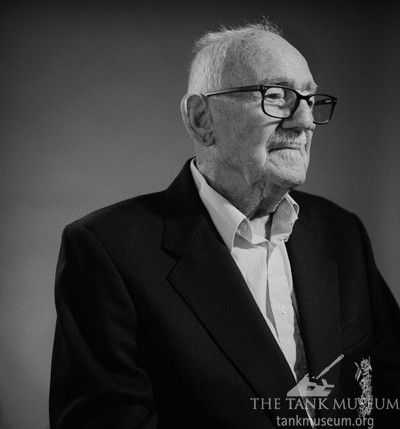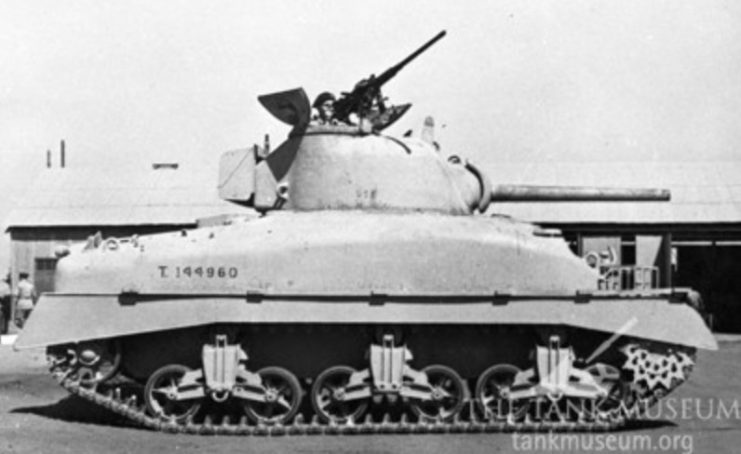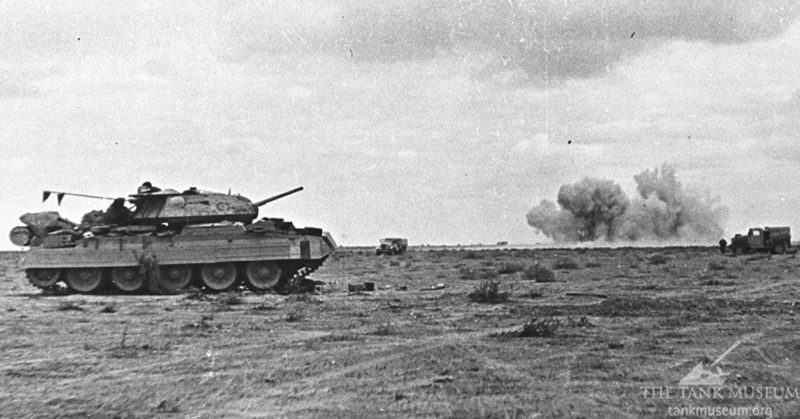In June 2017 North Africa veteran Reg Hunt, aged 101, visited The Tank Museum and spoke about his experiences as a soldier before and during the Second World War.
Reg was born in Farnborough, Hampshire, and joined the Army in April 1939. He’d always had an interest in cars, learning to drive when he was 17 ‘on a little Austin 7.’
During his training as a Driver Mechanic Reg was ‘a bit peeved… that the instructors never let me drive… because I could already drive – “you don’t need any instruction” – which was a shame.’
After training Reg waited to be posted. He’d intended to join the Royal Tank Regiment, but ‘eventually they asked for Driver Mechanics and I put my hand up and it happened to be for the 9th Queen’s Royal Lancers’. He joined them in Wimborne, Dorset, in spring 1940.
Most of May was spent ‘getting ready to cross the Channel to be with the British Expeditionary Force in France which we did, but we weren’t there two months and we were forced out.’
In September 1941, Reg and the 9th were sent to Egypt to join the 8th Army. During 1942 and 1943 they took part in heavy fighting in North Africa including at Knightsbridge and El Alamein, then advanced into Tunisia.

After a period of training and rest the 9thcrossed over to Italy in May 1944, which Reg remembered ‘seemed to be crossed by countless rivers. We were always getting rivers to cross and in many cases the bridges had gone, and the engineers came up and made temporary bridges.’
In North Africa the 9th had used a number of different tanks, although Reg was in A Squadron, which had Crusaders, which were ‘reliable and great to drive, but the armour was so thin that almost a rifle bullet could penetrate.
‘We had Crusaders until Alamein, and after that we had Shermans’ (‘I think we liked it generally, most people did. It was certainly better armour than we’d ever had before’). They continued to use Shermans in Italy. By Tunisia Reg was a tank commander.
Memories of North Africa

‘Quite honestly, I don’t think I remember much of the fighting, I think I put it out of my mind and it’s gone.’ In particular, ‘I’m afraid I can’t tell you anything about the Battle of Alamein because we just went forward and forward and forward. … We really didn’t take part, we were just in support.’
However Reg did recall one incident. The 9th’s War Diary tells us it occurred at around 1pm on the 24th April 1943 on the Goubellat Plain in Tunisia during the North Africa campaign.
‘We lost 6 tanks just one after the other like knocking down, playing a game. It was an 88, we never did know whether it was an anti-aircraft 88 or whether it was a Tiger tank. But it just… we mistakenly, or whoever was in command, thought we had to cross this wadi and turn right, because the enemy were down there, but in fact they were straight ahead, so as soon as we got across the wadi and up on the other side, turned right in a tidy row, they were just knocked out 1 2 3 4 5 6 just like that.
‘My driver, the shell went through the tank, took his legs effectively off, both of them, we didn’t realise that of course until we got him out. I said to the radio operator, come on let’s get out, get his door open, and he was a great big fella, he weighed about 14 stone I should think, and when we lifted him out he seemed so light, but when we got him out over the front of the tank to put him on the ground his legs were missing.
‘Poor chap.’
Four men were killed and 6 wounded in this incident. According to the War Diary the Squadron lost 5 tanks to 50mm anti-tank guns.
The Tiger

The Tiger’s reputation definitely made an impression on Reg and his comrades. ‘I’m afraid we, I think most people were pretty scared of Tigers, they were remarkable things.’
Taking them on was a team effort: ‘Well, we always believed that if you met a Tiger tank there was no one to one thoughts at all. You would need three tanks to fight a Tiger, so that two would be on the flanks trying to find some weaker spots.’
In Italy ‘we saw them. Not close up, because they didn’t have to get very close when they could just put you out of action.’ Reg later discovered one reason for this: ‘I can remember one that was out of action that I got into and their sighting for the gun was so much better than anything I’d ever seen in a British tank.’
Reg was in Italy until 1947, and ended the war as a Sergeant.
‘People say you’re remarkable because of your age, and I say no I’m certainly not remarkable, I’ve just been very lucky because I fought throughout the war and didn’t get wounded.’
A message from The Tank Museum:
“Please Support Us: As a charity, we rely on public support for all our activities. Our work is funded entirely by people like you. With your support, we can continue to create content. With the right support we might be able to do it more regularly – and can be even more ambitious. Please Click on the Banner Below.”
Thanks to the Tank Museum for this Blog, which originally appeared here.

